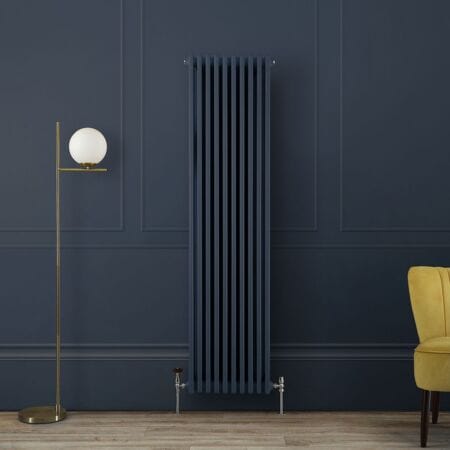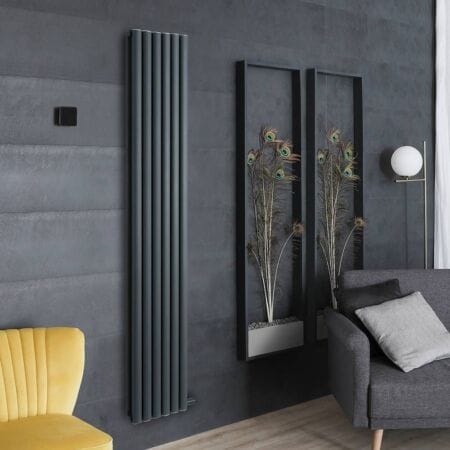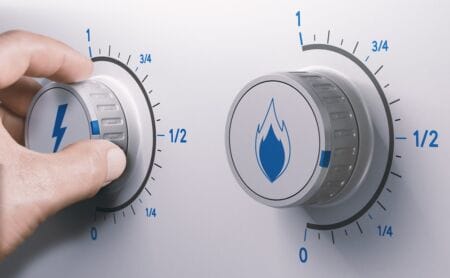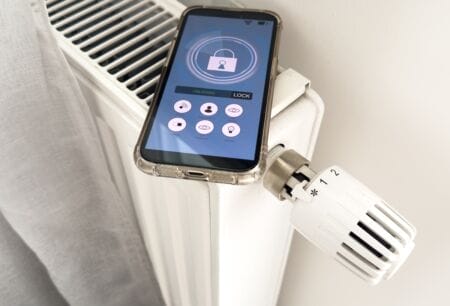Contents
ToggleWhat we'll cover...
The best eco-friendly heating options to consider for compact spaces.
How to achieve compact style and sustainability
When it comes to heating small rooms, the challenge is twofold: you want to stay cosy, but you don’t want to roast yourself into a coma. Essentially, working out how to achieve eco-friendly heating for small rooms has become a key facet in keeping your home toasty without wrecking your energy bills or your carbon conscience.
The good news? Heating a compact space efficiently can prove one of the easiest wins around when you’re looking to cut energy usage, reduce emissions, and still enjoy all the benefits of modern radiators or electric heaters. It’s all about selecting the right products, using them smartly, and thinking sustainably from the off.
So, no matter if it’s a box bedroom, home office, utility nook or even a glorified cupboard masquerading as a nursery, here’s how to heat your small space the eco-friendly way, and cut your carbon footprint without any compromise on comfort, cost or design.
What makes for eco-friendly heating?
Before we dive into the products and options, let’s define what we really mean by “eco-friendly” in a home heating context:
- Lower energy consumption (without compromised performance)
- Efficient retention of heat
- Smarter control (so you only use what you need)
- Sustainable materials and manufacturing
- Compatibility with renewables or off-grid sources
In smaller rooms, a massive heat output is not a requirement. You need precision, speed and control. And thankfully, modern heating systems have evolved to deliver just that.
The best heating options for small rooms
1. Electric radiators
Ideal for: Bedrooms, box rooms, garden offices, annexes
Electric radiators are sometimes dismissed by those who prefer to stick to their tried and tested, but when you go for a Lot 20 compliant model, you’re getting a whole bundle of energy-saving tech by default. We’re talking:
- Programmable timers
- Open window detection
- Adaptive start and eco modes
And because they run independently from your central heating, they’re perfect for zoned warmth. There’s no need to fire up the whole system to heat a single space.
Eco bonus: They can run entirely off green electricity if your home uses a solar or renewable tariff.
Ideal for: Hallways, utility rooms, en-suites
If you’re sticking with a plumbed system, opt for radiators that use less water but still deliver a quick burst of heat. Less water means less energy is needed for them to warm up.
These are:
- Faster to respond to thermostatic controls
- Lighter on your boiler
- Perfect for short, sharp heating spells
3. Dual fuel towel radiators
Ideal for: Small bathrooms, cloakrooms, and en-suites
Not just for towels. A dual fuel towel radiator lets you switch between making use of the central heating supply in winter and electricity in the summer. That’s year-round efficiency for your smallest rooms, and a whole lot fewer damp towels in the process.
Eco bonus: Use the electric element with a timer or app to avoid wasteful heating.
4. Smart heating controls
Ideal for: Every small room you want to heat cleverly
In relation to smart heating controls, it’s less about the radiator, and more about how you use it. Add smart thermostats, TRVs or zoned controls and you’ll:
- Only heat the rooms you’re using
- Set specific times for small space warmth
- Track usage and optimise performance
Eco tips for small room heating
- Insulate well – Small rooms are often poorly insulated. Ensure doors are draught-proofed, add thermal curtains, and sort out dodgy or outdated windows with a double-glazing upgrade.
- Use reflective panels – Stick heat-reflective panels behind your radiator to bounce warmth back into the room.
- Position it smartly – Find the optimal spot to position your radiator. Place your radiator under a window (if you have one) for better airflow and heat distribution.
- Close the door – Obvious, but effective. Trap that heat inside the space.
Sizing matters: Don't do it
In a small room, more doesn’t necessarily mean more. Overpowering your radiator can lead to:
- Wasteful short cycling (constant on/off switches)
- Overheating
- Damp or condensation resulting from poor airflow
Use a BTU calculator to size the radiator just right for the space. A compact aluminium radiator might do the trick in a matter of minutes, negating the need for a larger, heavier and clunkier version that would take up much more room.
Materials matter too
When choosing eco-conscious heating for a small space, the build material plays a big role:
- Aluminium: Quick to heat, quick to cool, and thus efficient for short bursts of warmth. It’s also a recyclable material.
- Mild steel: Retains heat for longer, making it an ideal option to provide steady, gentle warmth.
- Cast iron: Cast iron radiators are typically not ideal for small rooms. They can be considered a touch too slow to react, and heavy on energy in that they take a while to warm up and cool down.
Explore eco-friendly heating solutions with BestHeating
Eco-friendly heating in a small room isn’t about cutting corners- it’s about making smart, sustainable home heating choices that make sense with regards to the size and needs of the space.
By choosing the correct radiator type, using clever controls, and avoiding energy overkill, you can keep your cosy corners warm without maxing out the thermostat or melting the planet.
Who doesn’t want a snug home office or guest bedroom that costs pennies to heat and still feels like a treat?
Keep us up to date with your eco-friendly heating upgrades in the comments, or by reaching out to us on Instagram, Facebook or X.
John is a Research Specialist for the Best Heating Advice Centre, where for over nine years he has dedicated himself to demystifying home heating for our customers. He specialises in creating clear, data-driven guides and how-to articles by collaborating directly with our team of certified heating experts and product engineers.
His work, built on a foundation of journalistic research, has helped millions of readers make confident and informed decisions about their home heating. When he’s not breaking down the heat output differentials from radiators to heated towel rails, John fancies himself as a fine football and music connoisseur.








